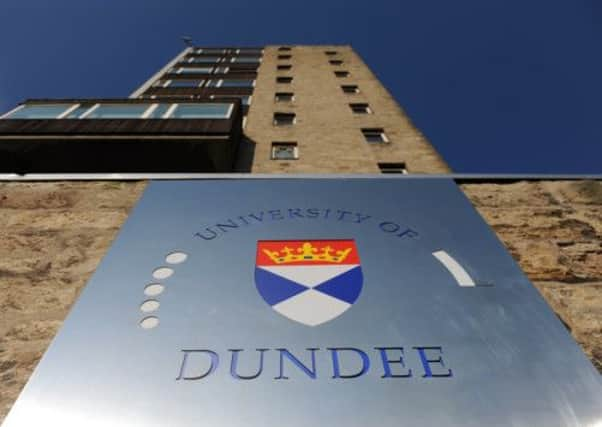Dundee, Edinburgh unis uncover bacteria ‘raincoat’


And the discovery, they believe, may potentially help scientists to understand how biofilms, formed in the human body, become resistant to antibiotics.
Biofilms are formed where large communities of cells work together and produce a sticky matrix that holds the cells together and provides protection from environmental threats.
Advertisement
Hide AdAdvertisement
Hide AdBut a team of Scottish scientists have now shown how a bacterium called Bacillus, commonly found in soil, protects itself by forming a water repellent coat - a “bacterial raincoat.”
They found that the process is due to a protein produced by the bacterium called BslA. This protein spontaneously assembles to form a water repellent coat, protecting the Bacillus cells underneath.
The findings of the team, led by Dr Nicola Stanley-Wall and Professor Daan van Aalten from the College of Life Sciences at Dundee University, alongside their colleague Professor Cait MacPhee, from Edinburgh University, are published today in the journal Proceedings of the National Academy of Sciences.
A spokesman for Dundee University said: “As Bacillus subtilis is currently being examined to assess its suitability for use as a widespread bio-fertilizer, the discovery has the potential to aid the development of an ecologically sound method of protecting crops.
“And, although the research centred upon the workings of a single bacterium, it may potentially help scientists to better understand how biofilms formed in the human body become resistant to antibiotics.”
Dr Stanley-Wall said: “We have determined the structure of the BslA protein, and used the information gained from it to identify the important parts of the protein that are responsible for making the biofilm coat water repellent.
“What we have shown is that this protein is very unusual in its ability to repel water from the environment whilst keeping the bacteria inside the biofilm in optimal conditions. The more we understand how the raincoat assembles the more we can work to encourage this process and increase the effectiveness of Bacillus subtilis as an environmentally friendly alternative to chemical fertilizers.”
She explained: “Bacteria are small, single-celled organisms, which play a variety of roles in nature. Although some types are linked to infection and disease, others are entirely benign and indeed are beneficial, such as those that live side-by side with plants and protect them from disease or those in the gut that are essential for the maintenance of human health.”
Advertisement
Hide AdAdvertisement
Hide AdDr Stanley-Wall added: “There are possible implications for many different plants and even for human health as the principles guiding the research are the same. If we know how bacteria assemble into a bacterium assembles biofilm then we know how to disrupt it in the case of harmful, or to encourage the growth of good bacteria.”
The research was funded by the Biotechnology and Biological Sciences Research Council and the Wellcome Trust.